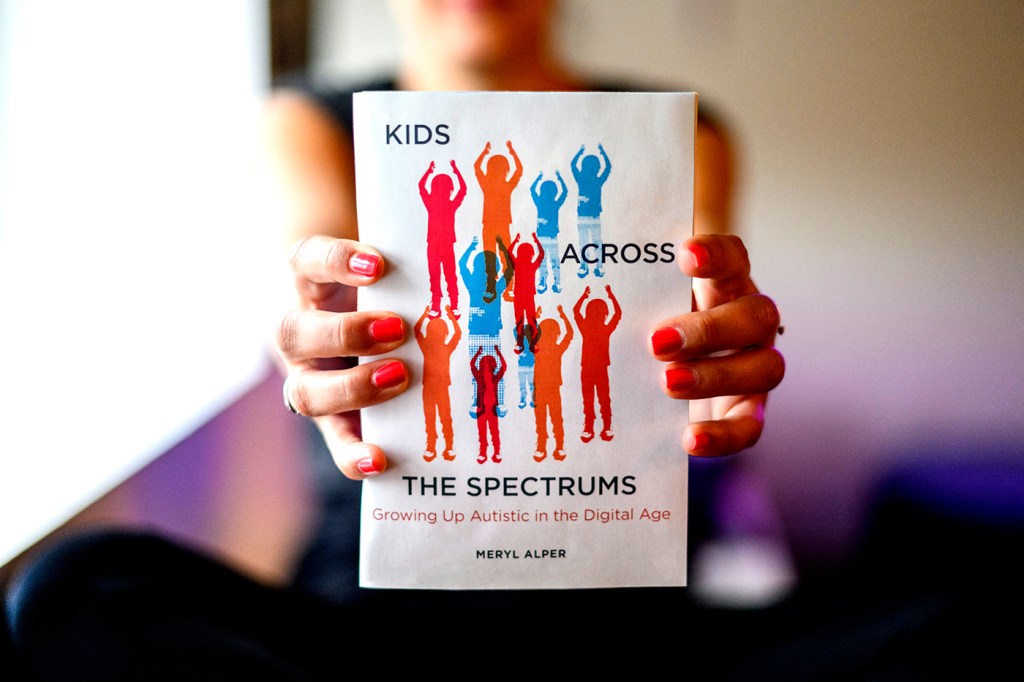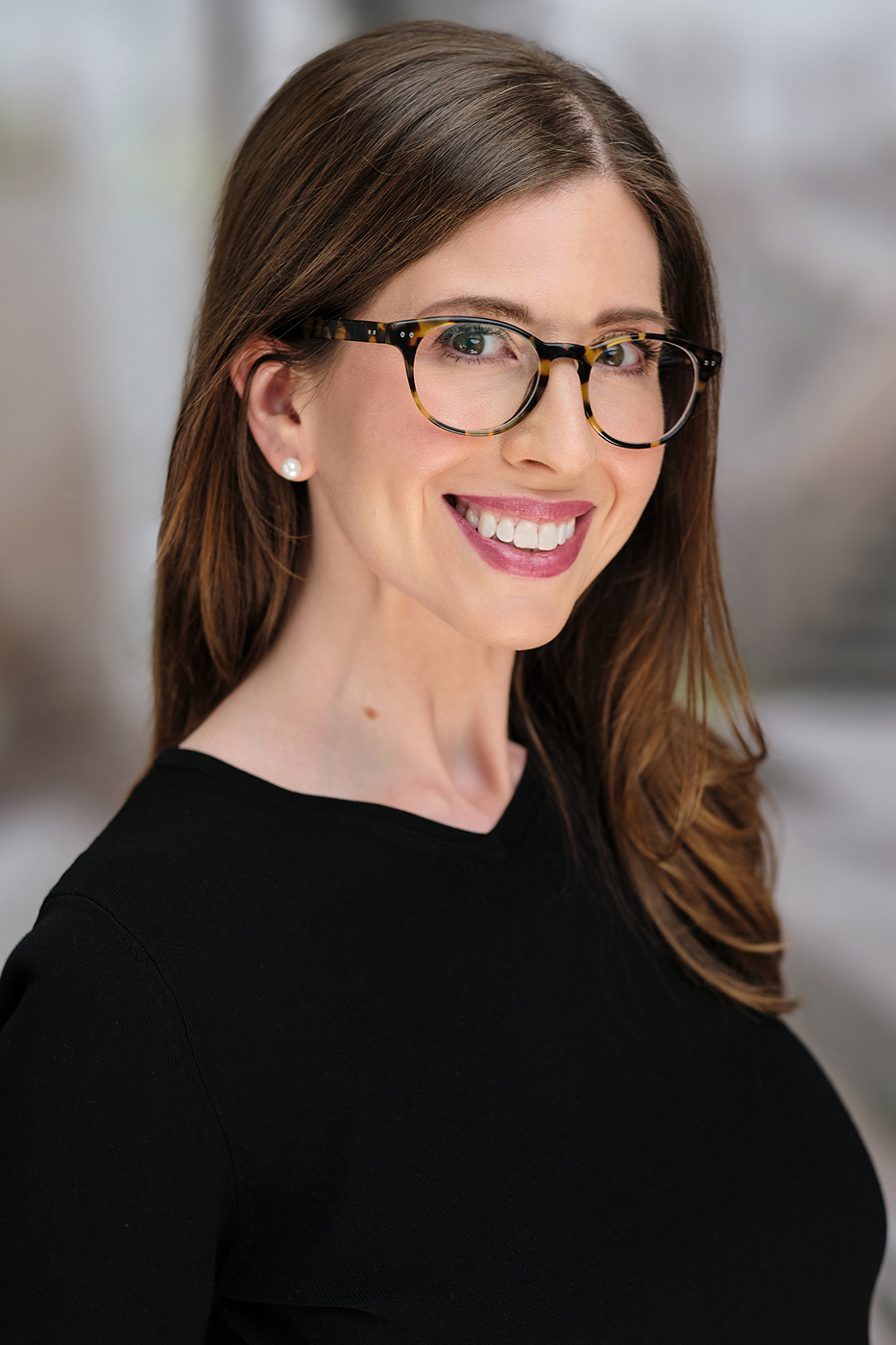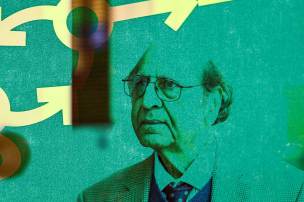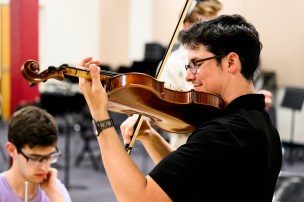Published on
A new book shatters stereotypes about autism and technology
For “Kids Across the Spectrums,” Northeastern University communications studies professor Meryl Alper studied the tech use of over 60 autistic kids with a range of abilities, ethnicities and economic backgrounds.

There’s a popular saying in autism advocacy: “If you’ve met one autistic person…you’ve met one autistic person”—a cheeky rebuttal to the old, tired maxim “If you’ve seen one [insert stereotyped group here], you’ve seen them all.” In Meryl Alper’s accounting, that’s true even within families.
Early on in her new book, “Kids Across the Spectrums: Growing up Autistic in the Digital Age,” Alper, a communication studies professor at Northeastern University, introduces Clayton, an 8-year-old Black boy who lives with his mother and two younger brothers in public housing near Boston. Both younger boys, Kahlil and Orion, have autism diagnoses. Clayton has many indicators of the disorder (characterized, in part, by difficulties with communication and regulating emotions, as well as repetitive behaviors and interests) and is considered on the “high-functioning” end of the spectrum. Yet the three boys have radically different personalities and interests.
Clayton is talkative and artistic, spending a lot of time playing Roblox and on YouTube watching drawing tutorials for his favorite Pokémon characters. Seven-year-old Kahlil, by contrast, is minimally verbal; he uses an augmentative and alternative communication (AAC) device at school and spends hours walking around the family’s apartment, listening to music through his mother’s iPhone “on the periphery of his brothers’ play,” Alper writes. For the two boys, technology serves different purposes: Clayton uses YouTube and gaming as means of learning and social interaction, while Kahlil’s love of music serves a solitary pleasure, an ambient comfort.

The brothers are emblematic of the case Alper builds with “Kids Across the Spectrums,” scheduled to be released Aug. 15 by MIT Press. For the book, Alper spent seven years interviewing nearly 60 families of autistic children with a wide range of abilities, ethnicities and socioeconomic backgrounds. The interviews and observations focus on the kids’ technology use—what they watch, how they play and interact socially and how it shapes their self-perception.
The result is a more expansive, empathetic and complicated portrait of autistic kids, through the lens of tech and media, than much past research and popular portrayals. In both, the default autistic person is typically a white, privileged, cisgender male with technical savvy, high intelligence and awkward communication skills—Dustin Hoffman’s character in “Rain Man,” or Sheldon Cooper from “The Big Bang Theory.”
“In some autism research, race and gender aren’t even reported,” Alper says in an interview. “Seeing a kid as only on the spectrum, only defined by their autism, to me that’s really not useful.”
In addition to shifting perceptions, Anna Allen, a researcher and speech and language pathologist who treats autistic teenagers, thinks the range of stories in the book could have tangible benefits on treatment and care. “It would be a great resource for educating clinicians,” she says. “So there aren’t just a couple of limited profile examples—somebody on the ‘high’ end of the spectrum, somebody on the ‘low’ end—but a variety that takes into account socioeconomic status, culture and race.”
‘Insight into their child’
Alper’s interest in children’s media and technology predates her academic career. After college she worked in television, interning at the Sesame Street Workshop and getting jobs in the education and research departments for the Disney Channel, Nickelodeon and PBS Kids. “When you start off your career at a place like that, your bar for the kinds of projects you want to be involved in are really high,” she says of her time at “Sesame Street.”
She began the fieldwork that eventually became “Kids Across the Spectrums” during her doctorate studies at the University of Southern California in the early 2010s. The iPad had just come out, and Alper was writing a research paper about amateur YouTube videos that parents were posting of their kids using the device. “A lot of the excitement around iPads was intertwined with little kids,” she recalls. “It was so intuitive that kids could get into computing at a very young age.”
She began to notice a large subset of those videos from parents of kids with disabilities, and how they were different than the more typical clips of parents showing off their tech-savvy toddlers, for instance. “What they were talking about wasn’t just how great the technology was, or how smart their kid was,” Alper says. “They were focused on the fact that the iPad was letting them see interests or capabilities their kids had that they had no idea about. They were gaining an insight into their child.”
Since then, access and disability has been a central focus of Alper’s research. For “Kids Across the Spectrums,” her third book, she conducted an ethnographic field study of families in and around Boston and Los Angeles between 2013 and 2020. She recruited subjects through local parent advocacy groups and word of mouth. Kids were between 3 and 13, half white and half non-white, with a higher prevalence of boys than girls. Forty percent had verbal impairments; some used technological aids to communicate. At least one was transgender. Alper re-interviewed many of the subjects multiple times, generally a year or more apart.
The project is “a response to widespread myths,” Alper says, “that that kids on the spectrum are inherently harmed by technology, are naturally great at technology, or the particularly insidious idea that technology makes kids autistic.”
“Kids Across the Spectrums” frames its stories around the key history of autism diagnoses and research, running through the origins of some of those troubling stereotypes. In 1959, Bruno Bettelheim, an influential child psychologist at the University of Chicago, published “Joey: A ‘Mechanical Boy’” in Scientific American. The piece chronicles Bettelheim’s years-long treatment of a young patient, Joey, who (Bettelheim claims) spoke in a robotic monotone and drew pictures depicting himself as a machine.
In the decades since, Bettelheim’s work has been largely discredited: He’s been accused of falsifying credentials, abusing patients and fabricating some of the more fantastical claims in his research. But his accounting of Joey—white, unfeeling, obsessed with mechanical devices and deprived of affection from an unfeeling mother—has stuck. “The notion that kids prefer technology over human interaction has taken many shapes in mass media,” Alper writes in “Kids Across the Spectrums.” “News reports falsely imply a link between autism, violent video games, and school shootings…In a much milder version of the mechanical boy stereotype, autistic youth are assumed to have a natural affinity for technology.”
‘More than just Joeys’
The book also grapples with what the mythology around Joey means for autistic kids who aren’t, like him, a white cishet male. Both girls and non-white children tend to be diagnosed later and at lower rates than their white male counterparts, affecting their access to services and appropriate support. Casey, a 6-year-old transgender girl in the book, was diagnosed with autism at age 2, when she was still presenting as male. Casey’s mom, Jennifer, suspects that Casey received services sooner by virtue of being born a boy.
“We have to account for the fact that there are more than just Joeys out there,” Alper says.
Alyssa Hillary Zisk, an autistic researcher and advocate who communicates with the aid of an AAC device part of the time, thinks that the sections of the book that address how tech influences self-perception in the autistic community could dispel a number of misconceptions.
“The parts about how people find parts of their identity reflected in media should shred at least a few ideas to bits,” Zisk writes in an email. “That autistic people can’t appreciate fiction, and a lot of things around sexuality. [Meryl] discusses insights from autistic parents — who grow up, have relationships, and have kids. All these things happen, [which] the stereotype of autism as a young white boy doesn’t really fit.”
With autism, the impact of technology has an added dimension because many people use tablet-based programs and other AACs in order to communicate. Zisk sees this as another area to which a vast ethnography like “Kids Across the Spectrums” could bring nuance.
“People tend to assume that either you can walk or you use a wheelchair, but not both,” Zisk says. “Similarly, people tend to assume that either you use AAC, or you speak, but not both. In fact, most wheelchair users can stand and walk at least a little, and [many] people who speak at least some of the time would benefit from AAC.”
Unsurprisingly, “Kids Across the Spectrums” refrains from making blanket conclusions. But Alper does outline some basic recommendations for parents, practitioners, and content creators for making sure autistic children are well served by their tech use. She calls for stronger privacy protections on platforms like YouTube and Google, as well as better mechanisms for flagging and filtering harmful content. Past studies have shown a correlation between neurodiversity and a vulnerability to online messaging; recently, Alper received a grant, in conjunction with Northeastern’s applied psychology department, to study the role social media plays among autistic girls coping with eating disorders.
And she encourages artists and creators of children’s programming to think more broadly about depictions of autism on screen. On this front, at least, she sees progress: Julia on “Sesame Street” has autism, as does AJ, a Black character on the animated PBS Kids show “Hero Elementary.” Still, she writes in the book, “it is almost as if autistic girls of color do not exist.”
Those supports, she thinks, should serve to better help parents protect and nurture their particular kid. Contrary to the robotic automatons of myth, for instance, many of the children Alper profiled had strong emotional reactions to the media they consumed. In the book, “Daniel Tiger,” the popular, gentle animated show spun off a “Mister Rogers’ Neighborhood” character, proves too much for one little girl. “The ups and downs those characters experienced were too intense for her,” Alper says. “‘Sesame Street,’ emotionally, was on a much better level. Even for autistic kids, it’s not one size fits all.”
Schuyler Velasco is a Northeastern Global News Magazine reporter. Email her at s.velasco@northeastern.edu. Follow her on Twitter @Schuyler_V.





